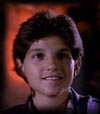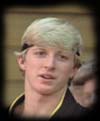|
BLOND and BAD; The Advent of the Preppie As Screen Villain
|
| By Rita Kempley, The Washington Post September 2, 1984 |
 So new dark-haired
heroes emerged, often banded together in multi-ethnic Mod Squads. And inevitably,
blonds became the establishment villains. The trend represents more than the ancient
rope-tug between haves and have-nots. "It's the reemergence of the American dream,"
says Richard Stephens, sociologist at George Washington University. "We've had
such bad world press on our divisiveness. It's a calculated thing on the part
of the producers to show the other faces of America."
So new dark-haired
heroes emerged, often banded together in multi-ethnic Mod Squads. And inevitably,
blonds became the establishment villains. The trend represents more than the ancient
rope-tug between haves and have-nots. "It's the reemergence of the American dream,"
says Richard Stephens, sociologist at George Washington University. "We've had
such bad world press on our divisiveness. It's a calculated thing on the part
of the producers to show the other faces of America."  Zabka plays the
leader of a pack of upper-class toughs, preppie Hell's Angels by day, country
club members by night. They're all blonds, right down to Chad McQueen's peroxided
roots. (Chad McQueen, ironically, is antihero Steve McQueen's son.) Avildsen wanted
a contrast with "Karate Kid" hero Ralph Macchio's dark visage. "We bleached his
hair just to continue the look."
Zabka plays the
leader of a pack of upper-class toughs, preppie Hell's Angels by day, country
club members by night. They're all blonds, right down to Chad McQueen's peroxided
roots. (Chad McQueen, ironically, is antihero Steve McQueen's son.) Avildsen wanted
a contrast with "Karate Kid" hero Ralph Macchio's dark visage. "We bleached his
hair just to continue the look." |
|
|
©1999 Fast Rewind WebSites. All Right Reserved. |